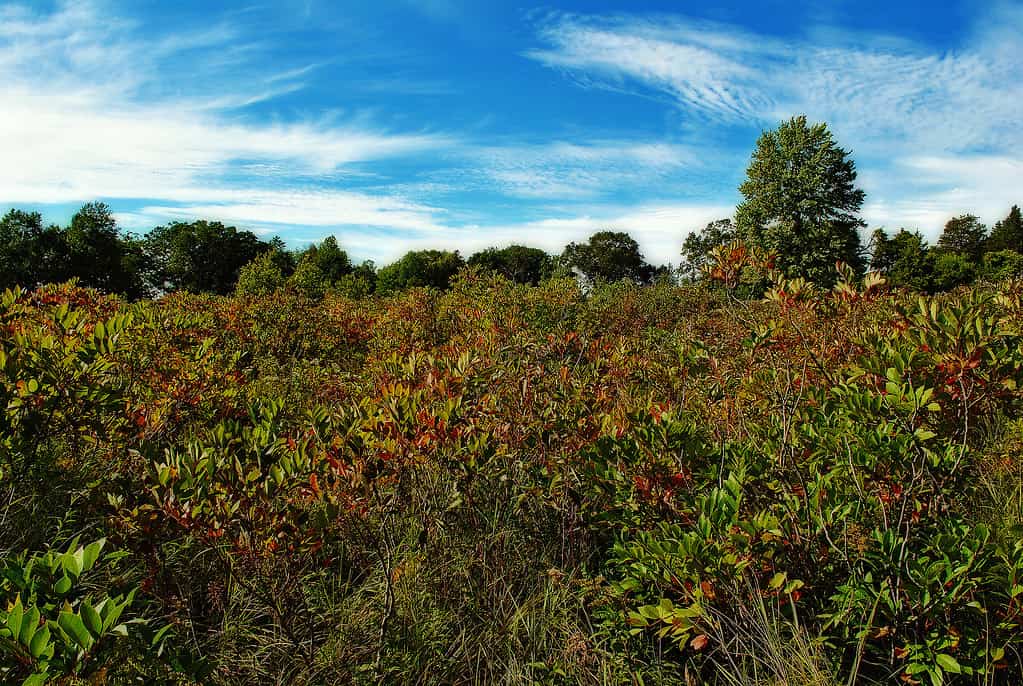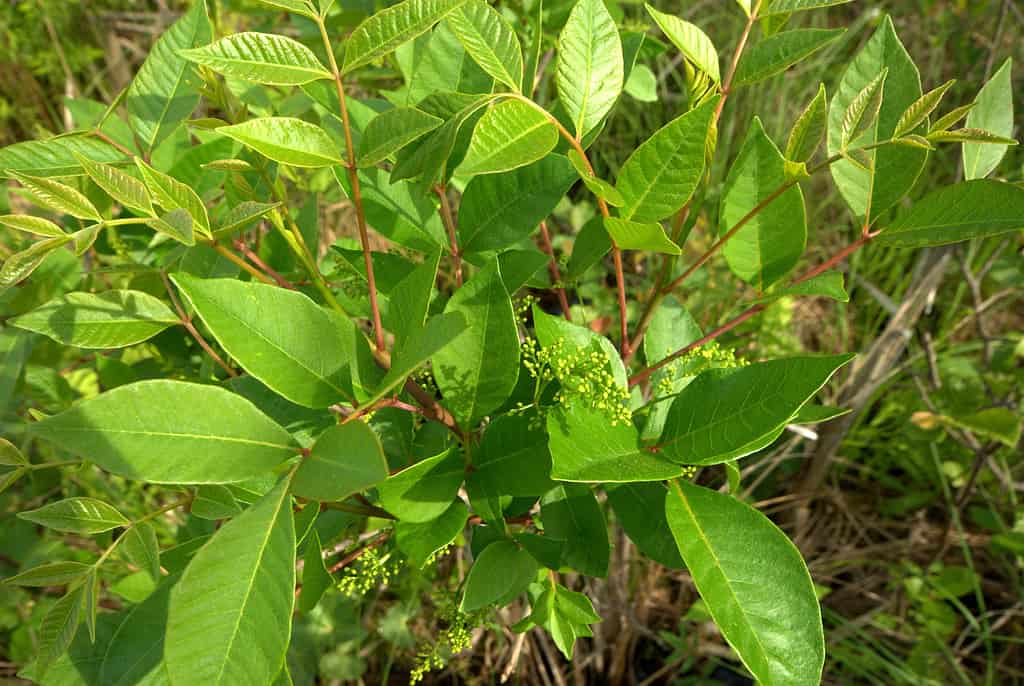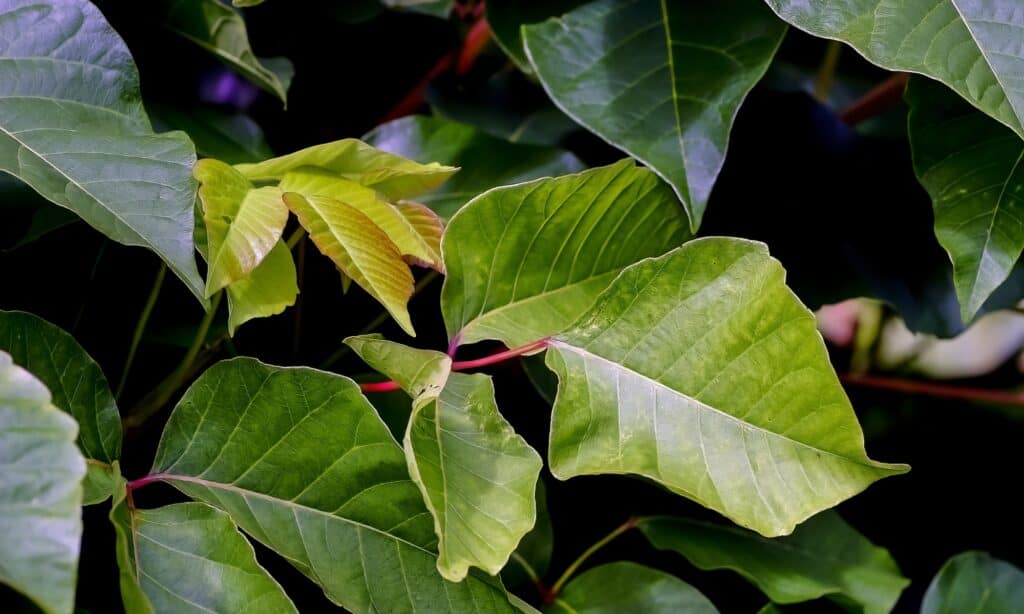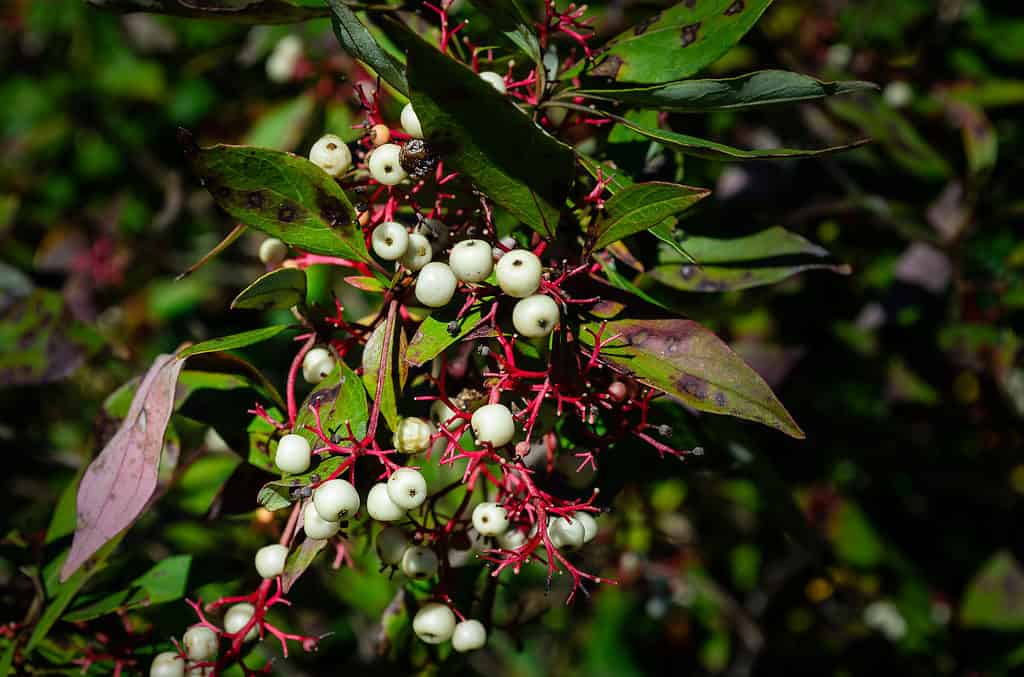We’ve all had those encounters when we’re walking around in forests. Is that shrub poison oak? We’ve also seen the Batman movies where Poison Ivy shows up. Her kisses are kisses of death. There’s another kind of toxic shrub called poison sumac (Toxicodendron vernix). Poison sumac is also colloquially known as thunderwood and these shrubs are usually located in the eastern part of the United States and some areas of Canada. Plans contain a resin, which is called urushiol. This mixture is a toxin that causes your skin to irritate. Poison ivy also has urushiol.
So, you’re walking in a swampy forest on a trail in the South. Are you prepared to know what poison sumac looks like? How to ensure you don’t pass through one and get a rash on your skin? Let’s take a look at the key features to know about poison sumac. Next time you’re out and about in a forest, you will know how to identify its unique characteristics.
Where is Poison Sumac Found?

Poison sumac is usually found in the eastern and southern parts of the United States.
©Aaron Carlson / CC BY-SA 2.0 – License
Luckily for you, poison sumac is only found in the eastern parts of the United States and a few regions in Canada. Poison ivy and poison oak are found everywhere, though. So, if you are in the Eastern parts of the US, it’s safe to say that you could encounter poison sumac in a swamp before. Poison sumac is usually found in New York, New England, Minnesota, Wisconsin, Illinois, Kentucky, Tennessee, Texas, Florida, and the entire South, among a few other areas. As for Canada, it is mainly found in Ontario and Quebec.
Furthermore, poison sumac is usually found in swampy types of forests, for example, marshes, wetlands, and anywhere there are wet soils. If you’re worried that you will encounter poison sumac on a hike in a field, don’t worry about it. The reality of the matter is that it’s more than likely that you will never encounter a poison sumac shrub in your lifetime.
Poison Sumac Shrub

Poison sumac is more toxic than its counterparts like poison oak or poison ivy.
©Joshua Mayer / CC BY-SA 2.0 – License
First things first, if you’re walking around and you want to identify a poison sumac shrub right away, look at its height. a poison sumac shrub (or small tree) will grow from about five to 20 feet tall. Furthermore, poison sumac shrubs are less dense and their branches will grow longer, usually sagging in a downward position.
The Shrub’s Leaves

If you become exposed to poison sumac, you will have painful blisters or a painful rash.
©iStock.com/Werner Meidinger
The next thing that you should do is to identify the shrub’s leaves. Usually, poison sumac shrubs will have double parallel rows of leaves on every single stem. If they don’t, the plant is not poisonous. Every single stem has around six to 12 leaves, and at the end, there is one more leaf. The stems are typically a red or reddish-brown color and when the plant ages, the color turns a more brown or gray color.
Afterwards, you should know that the leaves on a poison sumac are weirdly shaped. Poison sumac leaves are typically more oval-shaped. Moreover, the poison sumac will have a wavy type of side, as opposed to the more tapered leaves of sumac shrubs that are not toxic.
Flowers and Berries

Some plants look like poison sumac that are not toxic at all, which includes the winged sumac.
©iStock.com/Grb
It’s important to know that the poison sumac shrub looks differently depending on the time of the year. For example, in the springtime or summertime, the poison sumac will have yellow or green flowers attached to the stems. These flowers will grow on green stems in a sort of clustered way.
But what if it’s a different time of year? The poison sumac won’t have green or yellow flowers but will have green or yellow berries. If you are walking around in autumn, you will more likely see these small berries hanging on the shrub. The berries can also look more white or even cream-colored. Interestingly enough, animals sometimes eat these berries once they fall to the ground.
How to Treat Poison Sumac?

The rash will clear on its own within 1-14 days, but it’s important to immediately wash your hands with warm water and soap.
©Benjamin Clapp/Shutterstock.com
If you come in contact with poison sumac, there are various things that you should do immediately. Firstly, wash the affected area with warm water and soap. Secondly, apply topical solutions like calamine lotion onto the affected area. Thirdly, take antihistamines in order to relieve the itching the poison sumac causes. For greater help, oatmeal baths have always worked wonders because it helps to reduce itchiness.
Conclusion
And there you have it, that’s how you identify poison sumac. You always need to look out for poison sumac. The way to do it is to ensure that you are in the right place (if you are in California, you won’t run into poison sumac), look at its leaves, and if it’s the spring or summer, you look at its flowers. The next time you’re walking through a swampy forest in the South or Eastern United States, with this guide you will know exactly what poison sumac looks like. You will act accordingly to ensure you do not get exposed to this toxic shrub.
The photo featured at the top of this post is © Joshua Mayer / CC BY-SA 2.0 – License / Original
Thank you for reading! Have some feedback for us? Contact the AZ Animals editorial team.






